Frustrating, isn’t it?
You’re putting in a lot of effort to make a clean cut, but no matter what, your chainsaw just won’t cooperate. (Bummer!)
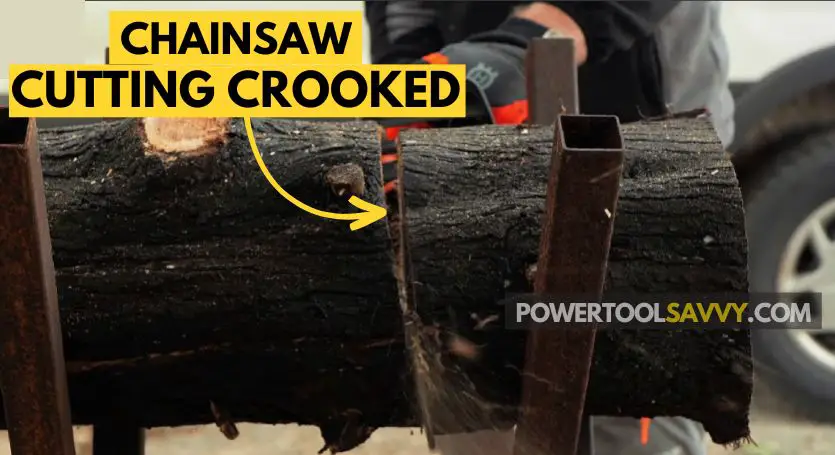
You’re not alone! We all face this annoying problem from time to time.
But why does your chainsaw cut crooked?
If your chainsaw cuts crooked, it could be because the chain isn’t evenly sharp. It might also happen if the bar is worn out, the rakers are uneven, the chain isn’t properly tensioned, or you’re using the wrong cutting methods.
This article goes deep into these issues, as well as shows you how you can fix them.
Are you ready?
Let’s get started!
Table of Contents
ToggleYou Sharpened the Chain Unevenly
The most COMMON (and likely the primary!) reason for a chainsaw not cutting in a straight line is an unevenly sharp chain.
What does that mean?
It means that one side of your chain is sharper than the other (see the image below for an example). As a result, the sharper side cuts deeper into the wood than the duller side, making the cut turn out “crooked”.
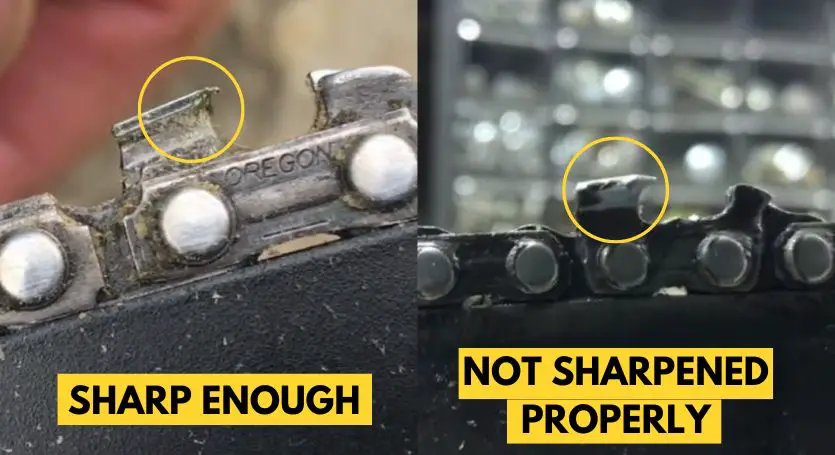
This mainly happens when you sharpen your chain manually but struggle to maintain the same angle & pressure on both sides of your chain.
Don’t worry; it happens to the best of us!
For example, I feel MORE comfortable when sharpening the right teeth of my chain. So, when it comes to sharpening the left teeth, I tend to apply more pressure (as I’m too cautious to MESS up).
How to Fix This?
✅ Method 1: Sharpen the less sharp side of your chain
You can figure out which side is less sharp by looking at the cuts.
If your chainsaw is cutting to the left (A), sharpen the teeth on the right side of your chain. If it’s leaning to the right (B), sharpen the left side of your chain.
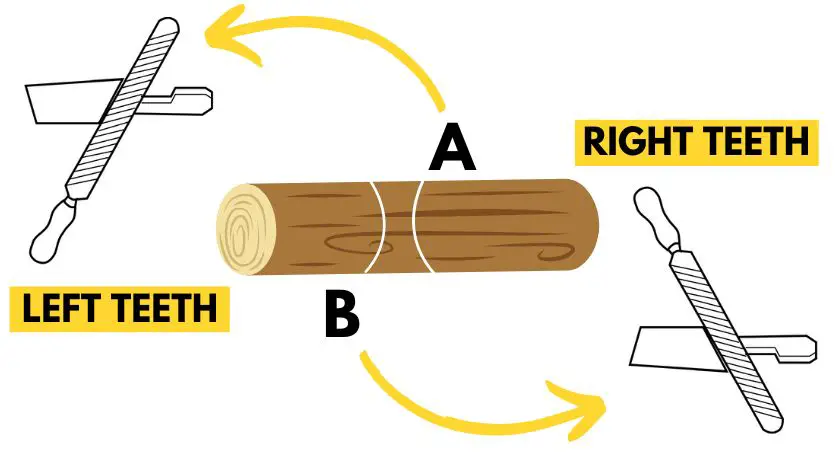
✅ Method 2: Maintain the same angle on both sides
As you file your chain, make sure to maintain the correct angle (between 25° and 35°) on all of your teeth. You can use a filing guide or a sharpening jig for this.
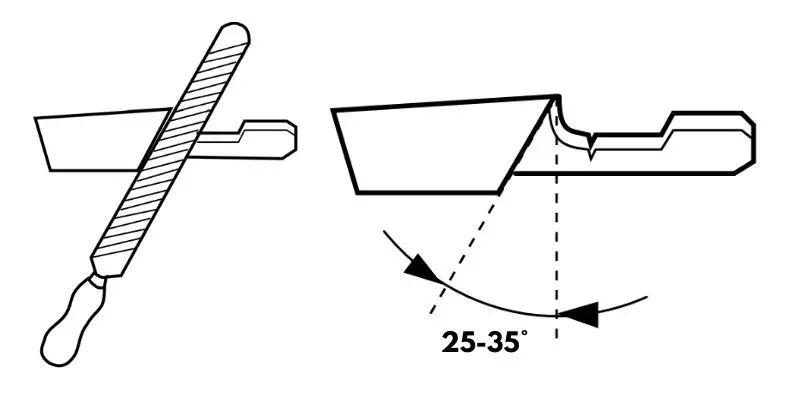
The Teeth on One Side of Your Chain are Bigger than the Other
Sometimes, even if you’ve sharpened your chain teeth correctly, your chainsaw might still not cut in a straight line.
This happens because the teeth on one side of the chain are BIGGER than the other.
Here’s what you need to know:
As you sharpen the teeth of your chain, they get smaller. The more you sharpen them, the smaller they become.
And when one side of your chain has bigger teeth than the other, the chainsaw will naturally pull towards that side.
This can be frustrating & might result in crooked cuts (or even accidents if you’re not careful).
So what can you do about it?
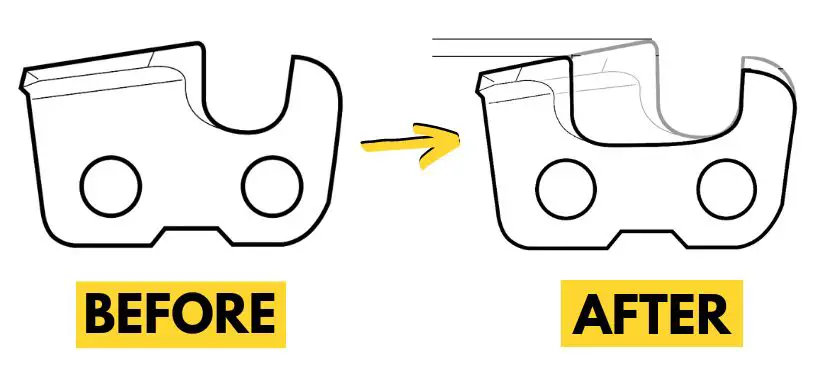
The Solution?
Well, you have got 2 options:
- File all the teeth to the same length: Use a gauge tool to MEASURE the length of the teeth on both sides of your chain, and then use a file to grind them to the same length.
- Replace your chain with a new one: If the length of your chain teeth is reduced to 4mm (0.16 inch) or less, it’s time to replace your chainsaw chain.
The Rakers on Your Chain aren't Adjusted Correctly
Another common mistake that leads to crooked cuts is not having the exact “raker clearance” on each side of your chain.
What is Raker Clearance?
Well, Raker Clearance (C) is the difference in depth between the cutter (A) and the raker (B) (also referred to as the “depth gauge”). It controls how much wood gets cut with each pass.
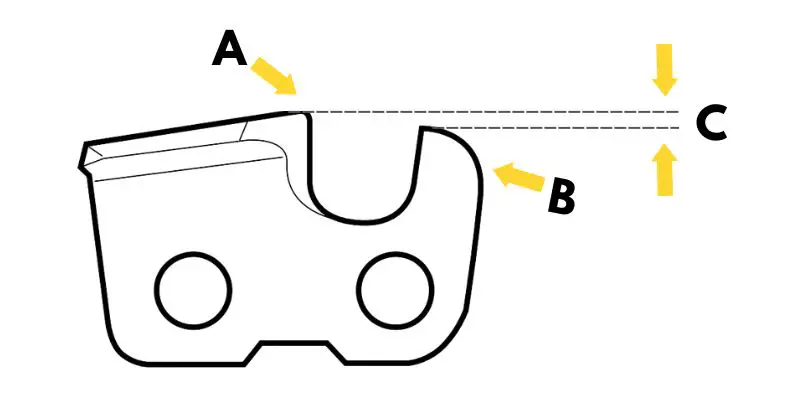
Every time you sharpen your chain, the cutting teeth gets smaller, reducing the Raker Clearance.
That’s why after each sharpening session, you need to adjust the rakers.
“But how does ‘Raker Clearance’ cause your chainsaw to cut crooked?“
Well, it’s likely that one side of your chain has a different Raker Clearance compared to the other side. This leads to one side cutting deeper into the wood, resulting in an uneven cut.
How can You Fix This?
To fix this, you’ll need a flat file and a raker gauge.
If you have got both of these already, follow the steps below to set the rakers evenly:
- Put the raker gauge over the raker lip.
- Place the flat file on the gauge & file off any extra part of the raker that sticks out from the hole.
- You’ll know the raker is set right when you don’t feel any resistance.
- Do the same for all the rakers on your chainsaw chain.
- When you’re done, check to make sure the clearance is even on both sides of your chain.
Here’s a detailed video of the entire process:
💡 TIP: It’s recommended that you adjust the raker clearance at least once every three times you sharpen the chain.
Your Bar Rails are Unevenly Worn
If your chain is not the issue, it could be your bar rails that are causing the problem.
Let me explain in simple terms:
The two long edges running the length of your bar are called bar rails. They guide the chain in a steady & steady path, making it easy to get a smooth, clean cut.
But sometimes the bar rails get wear down unevenly.
The problem with these unevenly worn bar rails is that they’ll make your chain sit at an angle. And when that happens, there’s no way your chain will cut in a straight line!
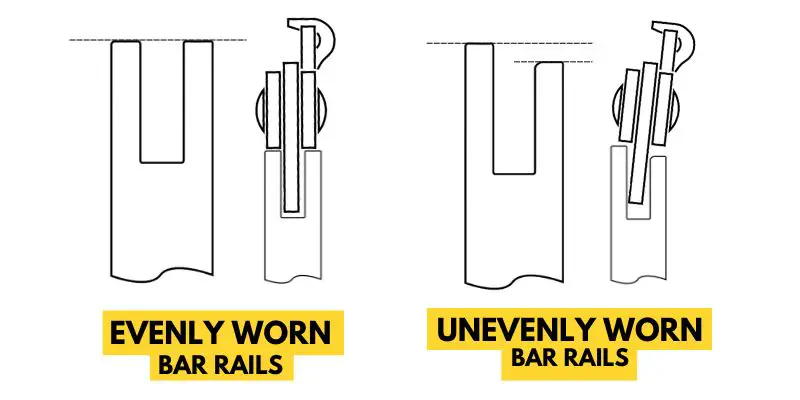
How to Tell if Your Bar Rails are Unevenly Worn?
Here are 3 EASY methods to check if your bar rails are “unevenly” worn or not:
- ✅ Close one eye & look along the bar from one end to the other. If one side is a bit lower or higher, it could mean uneven wear.
- ✅ Try to stand your bar on its rails. If it doesn’t stand, leans to one side or wobbles, that’s a sign the rails are uneven.
- ✅ Measure the height of the bar rails using a depth gauge tool. If it’s different at different points, your bar rails are uneven.
How can You Fix This?
Take your bar to a local engine shop & get the rails GROUNDED!
If you don’t have access to a grinder, you can do it yourself by using a flat file or a bar rail dresser.
Here’s Steve explaining the full process in detail:
The Groove on Your Bar has Gotten Wider
What do you think will happen if you try to put a 0.50 gauge chain on a 0.58 gauge bar?
The chain won’t fit & it’ll keep moving side-to-side, right??
The same goes here:
If your chainsaw is making crooked cuts, it’s possible that the groove on your guide bar has gotten wider, and the chain isn’t fitting snugly inside it.
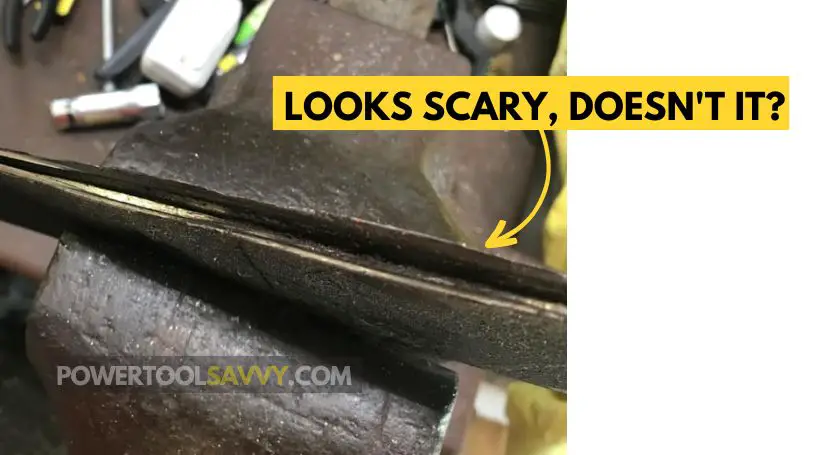
How to Fix This?
Well, here are 3 solutions to this issue:
✅ Solution #1: Flip Your Guide Bar
Usually, the bottom side of guide bars wears down faster because that’s where most of the cutting happens. The top part stays in GOOD shape.
So, if you turn the bar over, it can help your chainsaw cut straight once more.
💡 PRO TIP: It’s also a good idea to flip your bar once or twice every tank full of fuel to make sure it wears down evenly on both sides!)
✅ Solution #2: Narrow Down the Bar Groove
You can do this yourself by gently tapping the bar from the sides (watch the pinned video below for a demonstration), or you can take it to a nearby engine shop & have them do it for you.
✅ Solution #3: Get a New Bar
If your bar is severely worn out (or the previous solutions don’t work), you’ll need to replace the whole bar.
Read this article to learn more about replacing a chainsaw guide bar!
Your Chain isn't Tensioned Correctly
Another POSSIBLE reason could be that your chain is not properly tensioned.
Let’s face it:
Tensioning a chainsaw chain is not “rocket-science”, but it’s still something many people struggle with.
If your chainsaw chain is too loose, it might pop off the bar, and it won’t be stable enough to cut through wood in a straight line.
On the other hand, if your chain is too tight, it’ll cause excessive wear on the bar & you’ll experience low performance.
How Tight Should Your Chain Be?
In simpler terms, the chain should be just right, not so tight that you can’t pull it freely around the bar, and not so loose that it sags below the bar. (Read this article to learn more!)
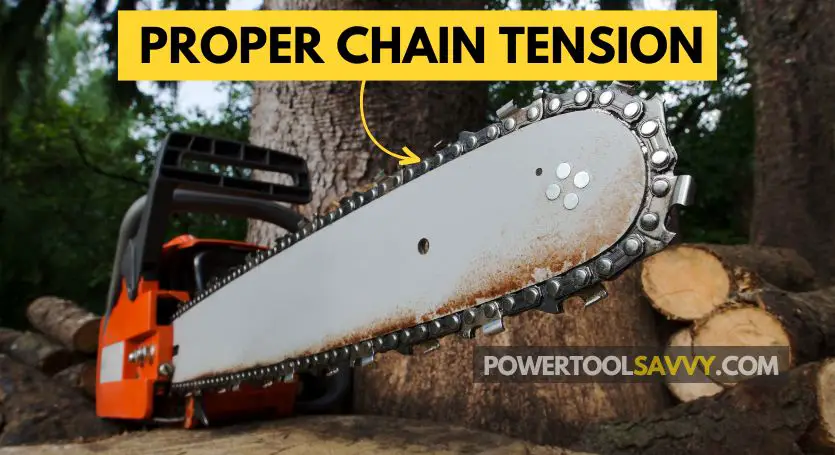
Don’t know how to tighten the chain?
Read this article where I’ve explained everything you need to know about chainsaw chain tightening!
You' are Holding the Chainsaw Wrong
A lot of times, there’s NO other reason for a crooked cut other than the operator not holding the chainsaw correctly!
How to Hold a Chainsaw the Right Way?
- Always use BOTH hands to grip your saw, with your left hand on the front handle & the right hand on the rear handle.
- Hold the your on the right side of your body, so you can easily see the saw blade.
- Stand STRAIGHT with your feet shoulder-width apart for balance & maintain a steady body position throughout the cutting process.
- When making a cut, push down evenly with both hands & move your saw in a slow, steady stroke.
- Hold your saw close to your body, with the cutting bar parallel to the ground.
- Avoid twisting or turning your saw while cutting, as this can cause the cut to be CROOKED.
The more you practice, the better you will become. Following these tips should help you make accurate cuts with a chainsaw.
GOOD LUCK!


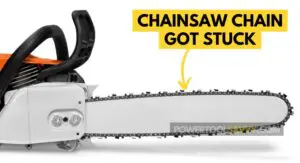
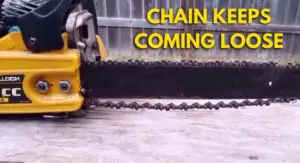
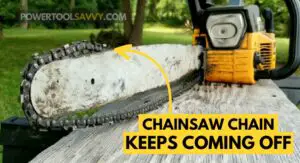

Pingback: Chainsaw Not Cutting? Here's How to Get It BACK in Top Form!
Pingback: How Long Does a Chainsaw Bar Last & When to Replace It
Pingback: 5 Reasons Why Your Chainsaw is Smoking (and How to Fix it)
Pingback: Chainsaw Burning the Wood Instead of Cutting? (5 Reasons)
Pingback: How to Tell If a Chainsaw Bar is Bent? (5 Amazing Methods!)
Pingback: How to Tell If a Chainsaw Chain is Dull? - Power Tool Savvy
Pingback: How Tight Should a Chainsaw Chain Be? The Ultimate Guide!
Pingback: Chainsaw Chain Keeps Coming Loose? Here's How You FIX It!